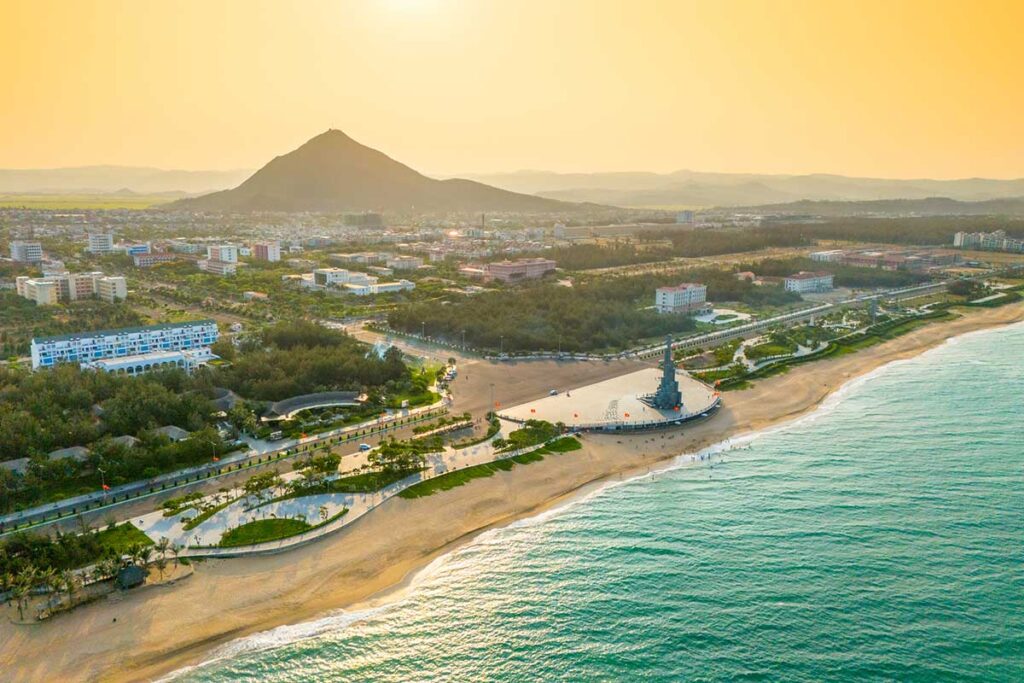Tuy Hoa – A quiet coastal base with room to breathe
Tuy Hoa sits on Vietnam’s south-central coast, on a wide river plain framed by the sea on one side and low mountains on the other. The setting gives the city a spacious, open feel, with long stretches of sandy beach right at its edge and green hills rising in the background. Life moves at a slower pace here compared to the larger coastal hubs, and the calm traffic and relaxed atmosphere make it an easy stop for travelers looking for a breather.

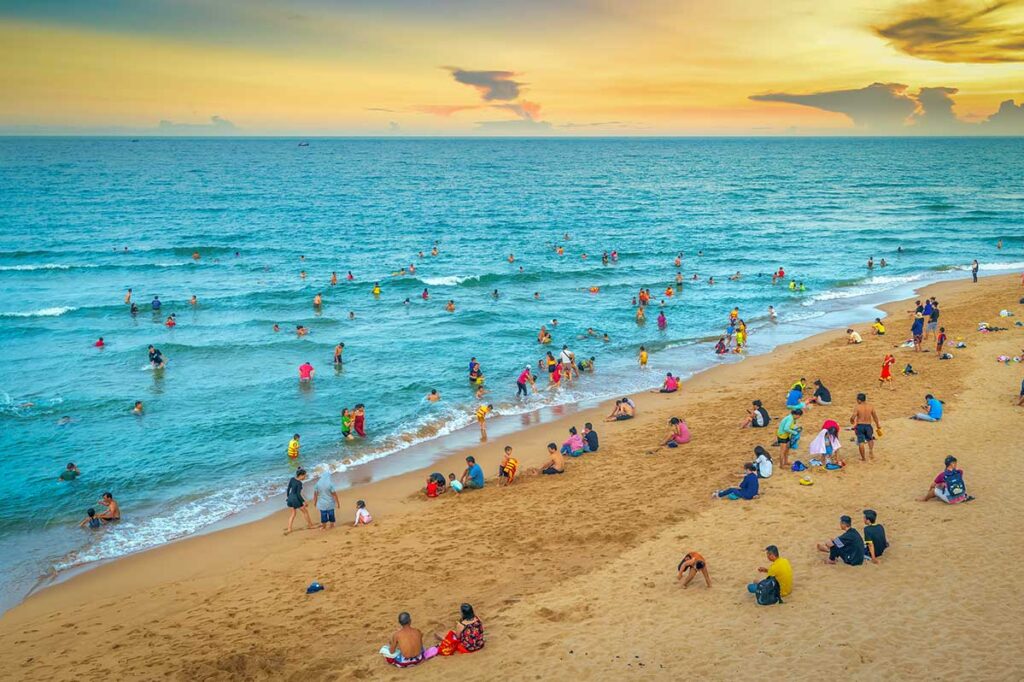
The city itself blends traces of history with modern civic life. The Cham-era Nhan Tower still overlooks Tuy Hoa from its hill, while newer landmarks like Nghinh Phong Square and Ho Son Lake give the city a contemporary face. Markets and street cafés set the rhythm of daily life—busy in the mornings, then quieter until the evening when families stroll along the beach promenade. Tourism is still at an early stage, with mostly domestic visitors and only a modest number of foreign travelers, so the city feels more like a lived-in provincial capital than a polished resort town.
Is Tuy Hoa worth a visit and a stay?
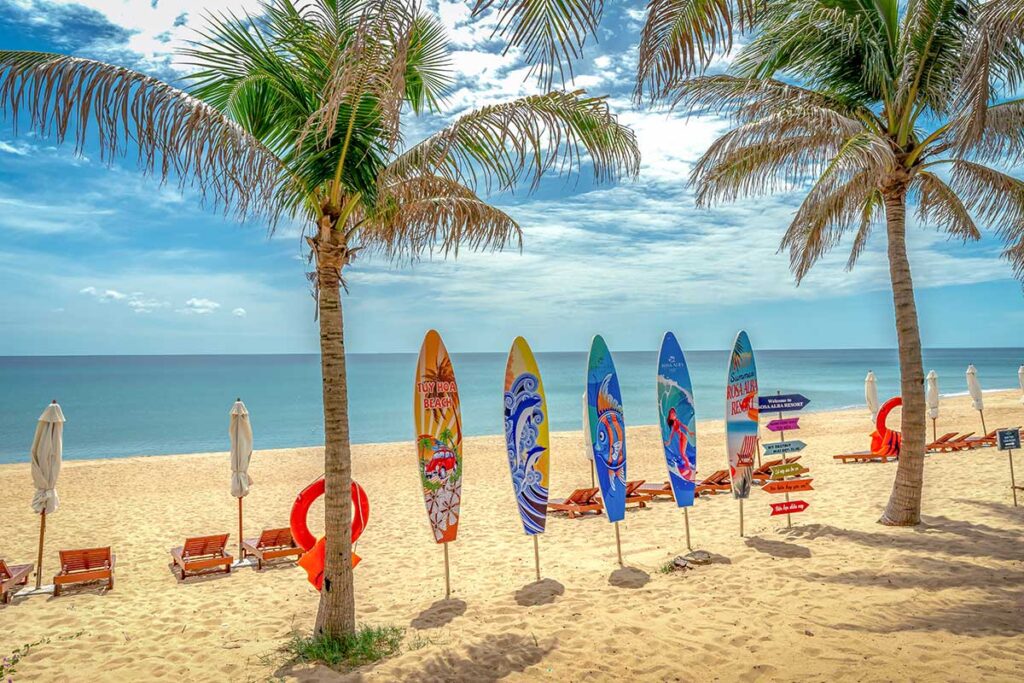
Tuy Hoa appeals to travelers who enjoy quiet beaches, easy-going coastal towns, and the chance to experience Vietnam without heavy tourist crowds. It suits those who prefer local seafood restaurants over international dining, a seaside promenade instead of nightlife strips, and good value for money when it comes to hotels and food. If you like to combine city comforts with access to small fishing villages and scenic drives, Tuy Hoa can be a practical and rewarding base.
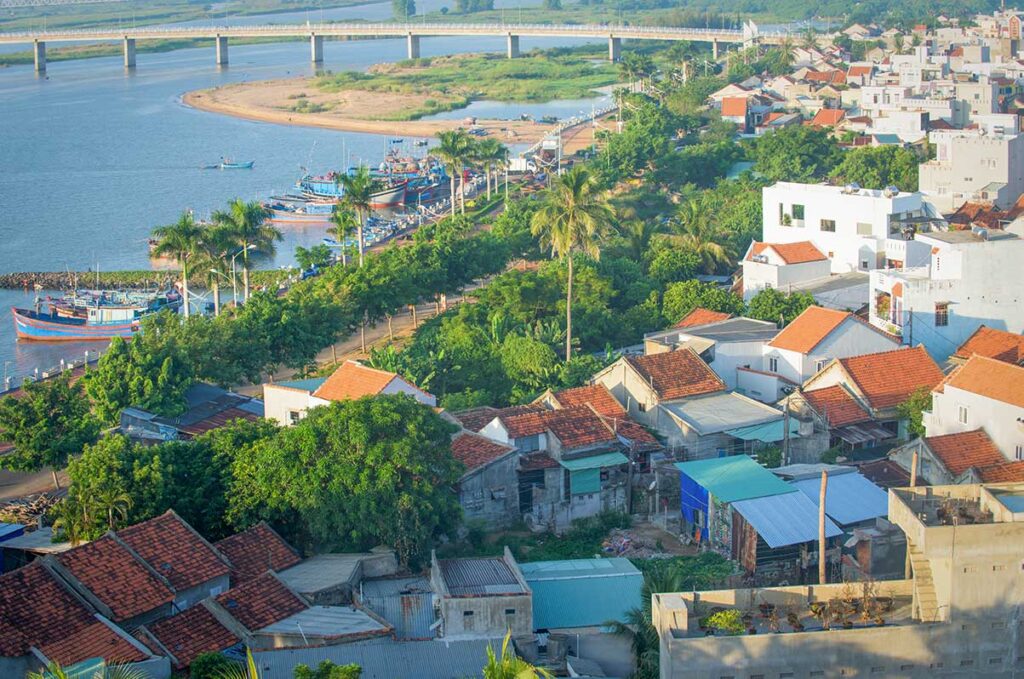
That said, expectations should be realistic: the city itself is modest and not packed with sights, so the real highlights lie just outside—long beaches, Cham ruins, and headlands with panoramic views. Staying in Tuy Hoa makes sense if you want convenience and access to transport, or if you prefer having shops, ATMs, and a range of accommodation within easy reach. If your priority is pure beach time, staying in a coastal village north or south of the city will feel more special, with sand right at your doorstep.
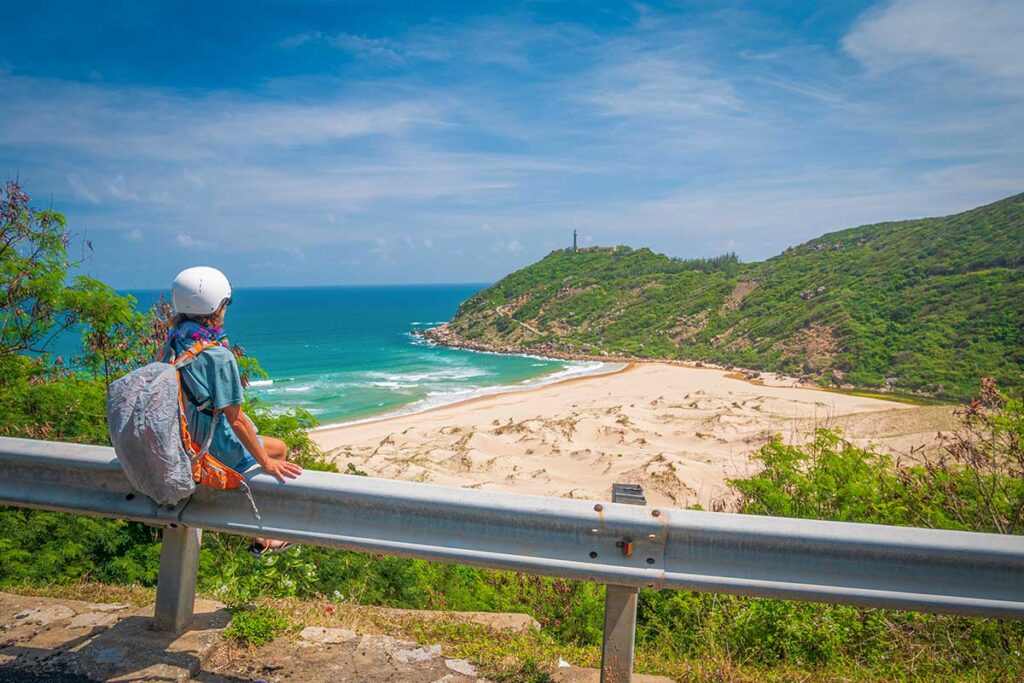
In the bigger picture, Tuy Hoa works best as part of a Phu Yen trip that mixes city evenings with day trips to the region’s landmarks: Vung Ro Bay and Mui Dien Lighthouse to the south, Da Dia Reef and Ong Cop Bridge to the north, and Hon Yen for low-tide coral views. Its location between Quy Nhon and Nha Trang also makes it a natural stop along Vietnam’s central coastline, especially for travelers moving slowly between the country’s busier hubs.
What to see and do in and around Tuy Hoa
Tuy Hoa itself has just a handful of modest sights, but its real appeal is as a base for exploring the coast and countryside of Phu Yen. Within the city you’ll find a mix of Cham heritage, modern civic spaces, and relaxed public areas, while a short ride out takes you to fishing villages, beaches, and viewpoints. For details on beaches in the wider province, see our full guide: Best Beaches in Phu Yen.
1. Inside Tuy Hoa city
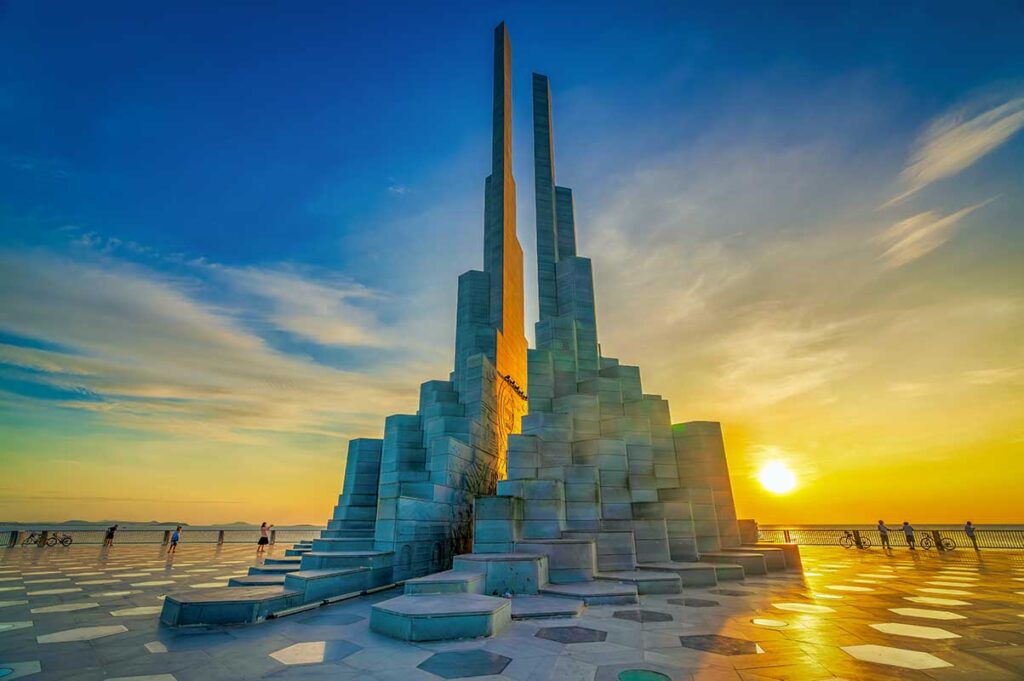
Nghinh Phong Tower – This striking monument has quickly become the city’s most photographed landmark. The two stone towers, inspired by the rock columns of Ganh Da Dia, create a dramatic silhouette against the sky and are especially atmospheric when lit up at night. The surrounding square is a popular gathering spot for evening walks, with food stalls and street cafés nearby.

Nhan Tower – A reminder of Phu Yen’s Cham heritage, this brick tower sits on a small hill overlooking the city and the Da Rang River. Dating back to around the 11th century, it’s less imposing than the towers in My Son or Nha Trang but still worth the short climb for its architecture and the wide views of Tuy Hoa and the coastal plain. Allow about 30 minutes to visit.

Phu Yen Museum – This is a compact provincial museum with exhibits ranging from Cham relics to items from the Nguyen dynasty and the French colonial period. While not a must-see, it’s a useful stop if you’re in the city during the heat of the day or a rain shower, thanks to its air-conditioning and manageable size. Entrance is free, and an hour is plenty to look around.

Ho Son Park & Lake – Built partly as a flood-control project, Ho Son has been landscaped into a pleasant public park. The lake, bridges, and walking paths make it a good spot for a late-afternoon stroll when the light softens. There are benches and shaded areas, but little in the way of cafés inside, so it’s best enjoyed as a quick break from the city streets.
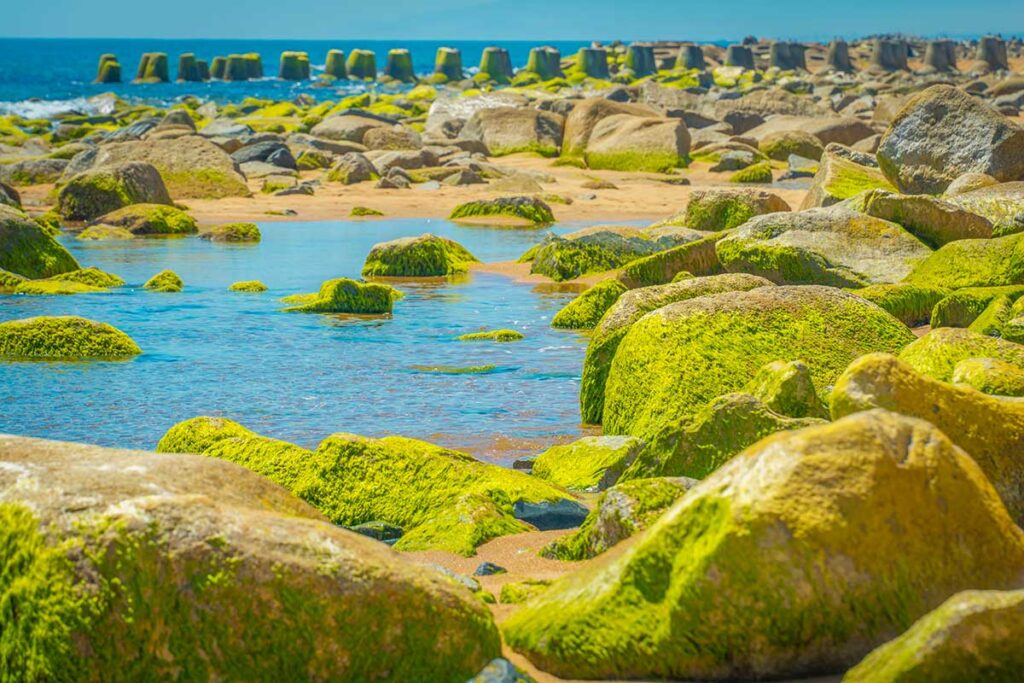
Xom Ro Moss Seawall – This unusual photography spot is only impressive for a few months of the year, usually January to March, when the seawall rocks are coated in vivid green moss. Outside of that window it looks ordinary, so it’s only worth going if you happen to be in Tuy Hoa during the right season. Even then, wear good shoes because the mossy surface is very slippery.
2. Coastal spots near Tuy Hoa (within 30–60 minutes)
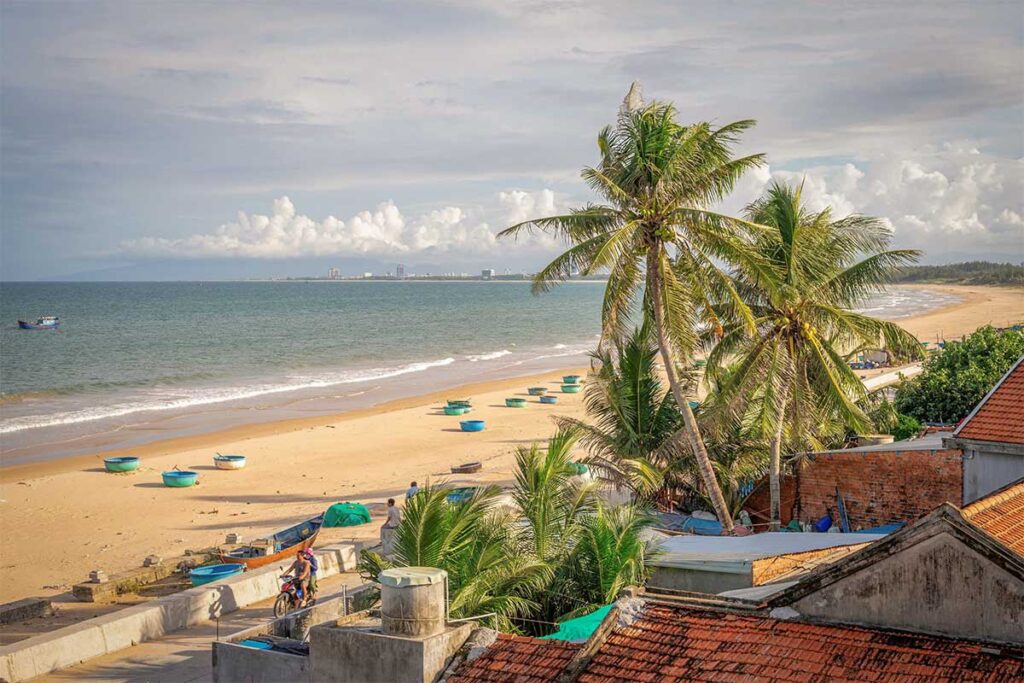
Long Thuy Beach – Located just north of the city, Long Thuy is a calm stretch of sand backed by a fishing village. It’s more about quiet morning swims and watching daily life than upscale facilities. There are a few casual eateries nearby, but don’t expect rental services or polished resorts.

Dong Tac & city beaches – Running south from Tuy Hoa, these beaches are the city’s “backyard.” They’re easy to access but quite simple, with patchy cleanliness depending on the season. Best for a dip in the dry months, though if you want more scenery you’ll likely head further out of town.

Hon Yen area – About 20 km north of Tuy Hoa, Hon Yen is known for its tidal coral views, visible at low tide when colorful reefs briefly appear above the waterline. It’s popular with Vietnamese photographers and can get busy on weekends. Nearby Mui Yen offers viewpoints over the coastline, but facilities are minimal—bring water and check tide times before going.
3. Day trips north of Tuy Hoa

Da Dia Reef (Ganh Da Dia) – This natural wonder is one of the most famous geological sites in Vietnam, with thousands of hexagonal basalt columns formed by ancient volcanic eruptions. The rocks stretch out into the sea in honeycomb-like patterns, creating a striking contrast with the waves. It’s best visited in the early morning or late afternoon when the light makes the formations stand out, and sturdy shoes are recommended for climbing on the uneven surfaces. Expect some crowds on weekends and holidays, but the sight is still unique and worth the trip.
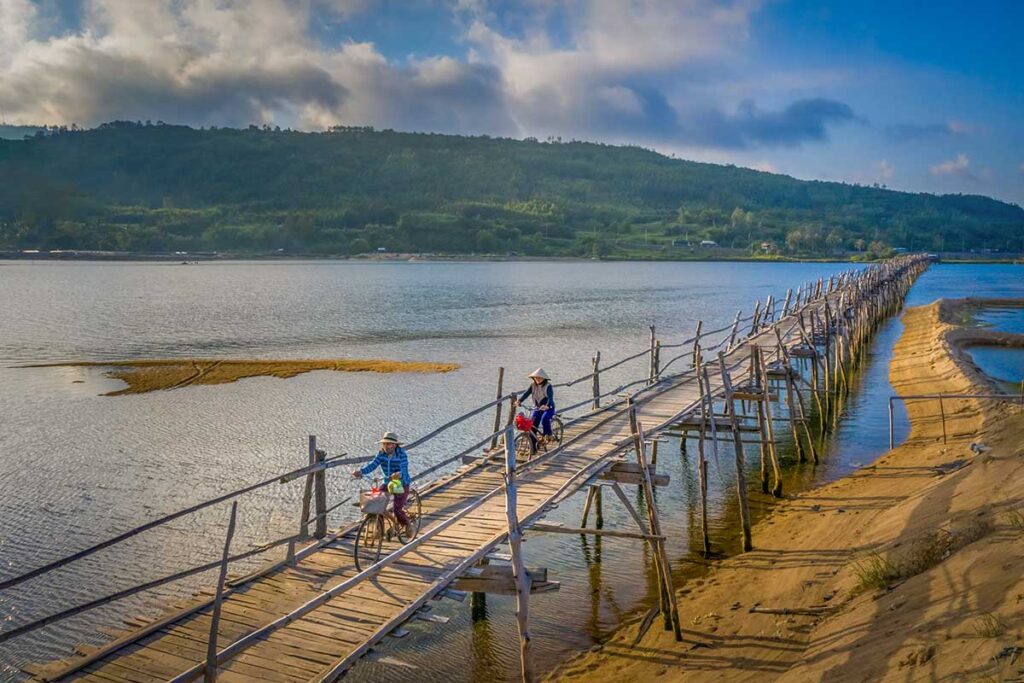
Ong Cop Wooden Bridge – Just north of Tuy Hoa, Ong Cop (also called Mr. Tiger Bridge) is the longest wooden bridge in Vietnam. Made entirely from timber and bamboo, it stretches across a river mouth and has a charming, old-fashioned character that makes it a favorite for photos. It’s still used by motorbikes and pedestrians, so be careful when walking across. You don’t need long here—20 minutes is enough unless you’re combining it with a coastal drive.
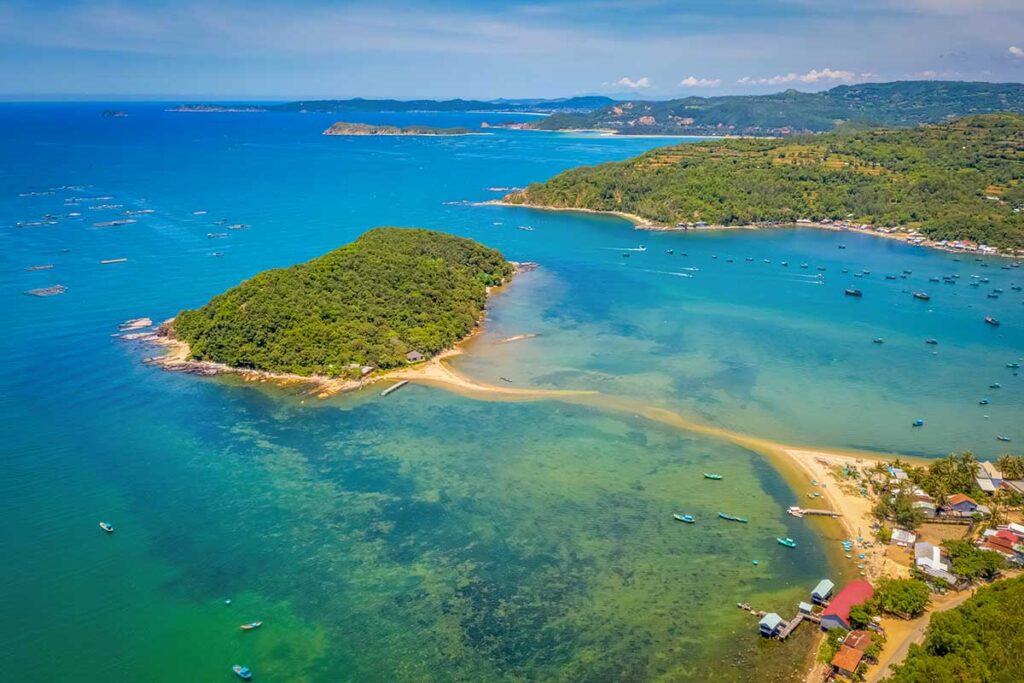
Lao Mai Nha & Nhat Tu Son Islands – Both islands offer undeveloped, quiet escapes that are best suited to adventurous travelers. Lao Mai Nha, often compared to a “mini Robinson Crusoe island,” has no electricity or services, so bring your own supplies if you plan to camp or stay a few hours. Nhat Tu Son is known for its tidal sand path, which appears at low tide and connects it to the mainland. Conditions vary with the weather, and facilities are minimal, so it’s more about raw scenery than comfort

Mang Lang Church – Built in 1892, this is one of the oldest Catholic churches in Vietnam, with Gothic-style architecture and weathered grey stone that give it a distinctive look. It’s small and doesn’t take long to see, but it holds cultural value as the place associated with Vietnam’s first catechism written in the Romanized script. The church can be combined with a visit to Da Dia Reef, since they are on the same stretch of road.
4. Day trips south of Tuy Hoa

Vung Ro Bay – A working fishing harbor surrounded by hills, Vung Ro is lively with boats and floating seafood restaurants where you can eat fresh fish straight from the water. It’s not a polished attraction, but the busy harbor life gives it atmosphere. Combine it with nearby viewpoints for the best experience, as the bay itself is more about local color than sandy beaches.
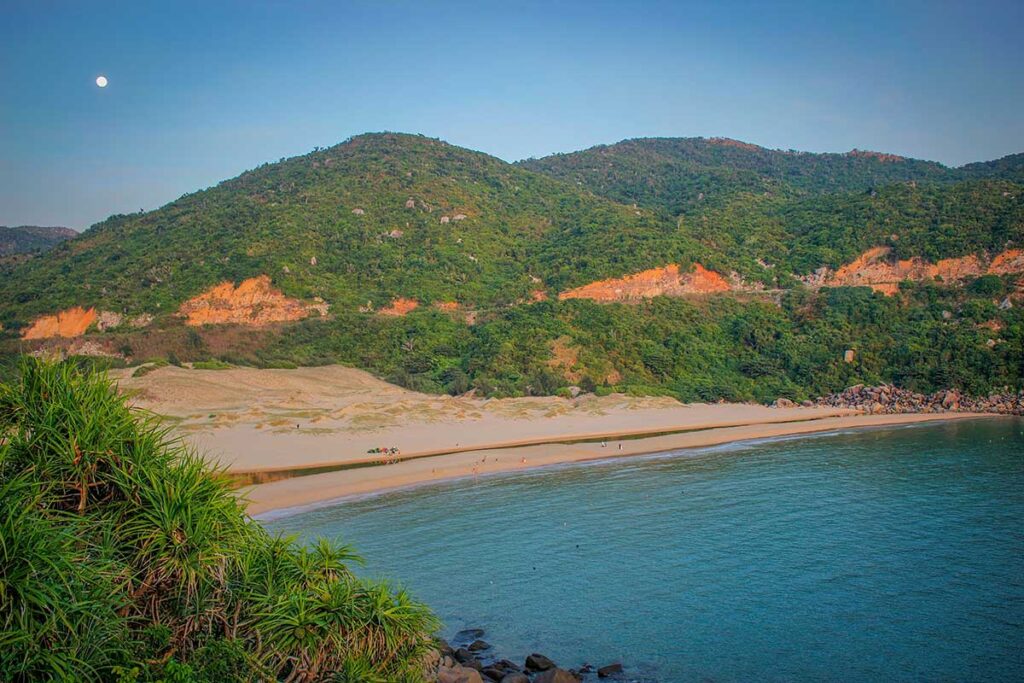
Mui Dien Lighthouse & Bai Mon – Perched on a headland that marks one of Vietnam’s easternmost points, Mui Dien Lighthouse offers sweeping views of the coastline. The climb up is not difficult and rewards you with panoramas of the sea and surrounding hills. Below the cape lies Bai Mon Beach, a dramatic bay of sand and dunes, though swimming is often restricted due to strong currents. A small entrance fee covers access to both the lighthouse and the beach path.

Coastal road viewpoints – The stretch of road between Tuy Hoa and Vung Ro is one of the most scenic drives in central Vietnam. Winding along cliffs with the sea on one side and green hills on the other, it offers plenty of viewpoints for photos. Just be cautious when pulling over, as winds can be strong and traffic occasionally fast-moving.
How to get there
Tuy Hoa is well connected for a provincial capital, with options by plane, train, bus, private car, or motorbike. The city sits right on Vietnam’s main north–south travel route, making it easy to slot into a longer coastal journey.
By plane
Tuy Hoa Airport (TBB) is located about 7 km south of the city center, and the drive takes just 10–15 minutes. There are regular direct flights from Ho Chi Minh City and Hanoi, though schedules are limited compared to larger airports. Airline frequency can change seasonally, so it’s best to double-check when booking. Taxis and ride-hailing apps are usually available outside the terminal, but arranging a transfer with your hotel can be more convenient.
By train
Tuy Hoa has its own station on Vietnam’s Reunification Line, and this is one of the most scenic stretches of track in the country. The section between Nha Trang, Tuy Hoa, and Quy Nhon passes through coastal cliffs, lagoons, and rice fields, making it a memorable way to arrive. For longer trips, consider a soft seat for daytime views or a 4-berth sleeper for overnight comfort; 6-berth cabins are cheaper but more cramped.
By bus
The city lies right on National Highway QL1A, so buses and limousine vans connect Tuy Hoa with many major destinations. Travel times are approximately:
- Nha Trang → Tuy Hoa: ~3 hours
- Quy Nhon → Tuy Hoa: ~2 hours
- Da Nang / Hoi An → Tuy Hoa: ~7–8 hours
- Dalat → Tuy Hoa: ~4–5 hours
- Ho Chi Minh City → Tuy Hoa: ~11–12 hours
Standard sleeper buses are the cheapest option but can be basic. If comfort matters, look for VIP sleeper buses or limousine vans, which have fewer seats, more legroom, and smoother rides for only a small price increase.
Other ways
If you’re traveling from nearby hubs like Nha Trang or Dalat, hiring a private car with a driver is the most flexible option. It allows you to stop at viewpoints, small fishing villages, or beaches along the way.
Motorbikes are also popular for this stretch, especially the coastal road between Quy Nhon, Tuy Hoa, and Nha Trang, but it’s only recommended if you have solid riding experience. The wind along the cliffs can be strong, and fuel or food stops are limited outside towns, so plan ahead.
Where to stay
Accommodation in and around Tuy Hoa is varied, but the experience depends a lot on where you choose to base yourself. The city is convenient for food, transport, and shops, while the coast offers more atmosphere and direct beach access. Here’s how the main areas compare:
Tuy Hoa City (inner streets) – The center has plenty of simple, good-value hotels. They’re practical if you want to be close to cafés, local restaurants, and transport hubs, but they’re not particularly charming. Rooms are often budget-friendly, making the city a decent stop if convenience matters more than scenery.
Tuy Hoa beachfront road – Larger hotels and a few resorts line the main seafront boulevard. Most are set back with a road between the property and the beach, so you won’t be stepping directly onto the sand. They do, however, offer sea views, pools, and easier access to the promenade.
North of Tuy Hoa along the coast – This is the best option if you want true beachfront. Small resorts and bungalows sit closer to the sand here, in quieter surroundings than the city. Services are limited compared to town, but the trade-off is direct access to long, uncrowded stretches of beach.
South of Tuy Hoa (coastal villages) – A few fishing villages south of town have homestays and small boutique hotels. They give you more of a local vibe, but facilities are basic, English is limited, and ATMs are scarce—bring cash. Staying here works well if you’re after authenticity rather than comfort.
Around the province – Scattered further afield, there are a handful of upscale or luxury hideaways. These are usually isolated, self-contained resorts with high-end amenities. They’re best for travelers who want seclusion and are fine being far from the city.
Bottom line: If your main goal is beach time and scenery, staying outside the city—north or south—often feels more rewarding. Tuy Hoa itself is practical for food, coffee, and transport, but the real atmosphere of Phu Yen is found along the coast.
Practical visiting information & travel tips
Money, shops & SIM/ATMs
ATMs, pharmacies, and convenience shops are easy to find in Tuy Hoa city, but once you leave for smaller fishing villages or remote beaches, they become rare. Always bring enough cash if you plan to spend the day outside town, as most small eateries and homestays don’t accept cards. SIM cards and top-ups are available in the city; mobile coverage is decent in most coastal areas but can drop on more remote stretches.
Getting around locally
Within Tuy Hoa, taxis and Grab cars are available and inexpensive, and some hotels lend out bicycles. The seaside promenade makes for an easy evening walk. To explore the wider province, renting a scooter is the most flexible option—traffic is lighter than in bigger cities, though coastal winds can be strong. If you prefer more comfort, arranging a private car with a driver allows for beach-hopping or day trips; just pre-arrange returns from remote spots since transport options can be thin.
Beach & sea realities
Swimming is most reliable in the dry season, when seas are calm and clear. Some beaches have rocky patches or sea urchins, so water shoes can be useful. After storms, litter can wash ashore, especially near the city—walk a little further to find cleaner stretches. Facilities vary: expect a mix of rustic fishing-village beaches and near-empty sands, not developed resorts with loungers.
Food & cafés
Tuy Hoa is not a dining hotspot, but it does have a solid range of local restaurants, seafood stalls, and small cafés. Expect cash-only payments, simple fan-cooled seating, and limited English. Breakfast and market dishes are usually served early in the day, while evenings are best for seafood and street food. Don’t expect much international variety, though a few barbecue or hotpot places exist. Coffee culture is lively, with many small garden cafés and seaside stalls—good spots to pause during the cooler hours.
Typical local dishes to try:
- Banh canh he – noodle soup flavored with chives, a Phu Yen specialty you’ll see everywhere.
- Tuna dishes – including the unusual “tuna eye soup,” often served with mustard greens.
- Small banh xeo – crispy savory pancakes, smaller than in southern Vietnam.
- Chicken rice – a popular and filling lunch option.
- Seafood trays – simple grilled fish, clams, or squid, usually at casual seaside restaurants.
Food here is more about freshness and value than variety—don’t expect fine dining, but do expect honest portions and low prices.
Safety & weather
The sun can be very strong along the coast, so plan breaks during midday and stay hydrated. Winds pick up around capes and viewpoints—hold on to hats and be cautious if you’re on a motorbike. Swimming flags or closures should be respected, especially at Bai Mon and Mui Dien, where currents can be dangerous.
Where to go next
- North: Quy Nhon for more beaches and island trips, and onward to Hoi An, Da Nang, and Hue for history and culture.
- South: Nha Trang if you want more activities, nightlife, or water sports, or the quieter Cam Ranh coast for beach resorts.
- Highlands: Dalat, about five hours away, offers cooler weather, pine forests, and mountain scenery—a big contrast to Tuy Hoa’s coast.
